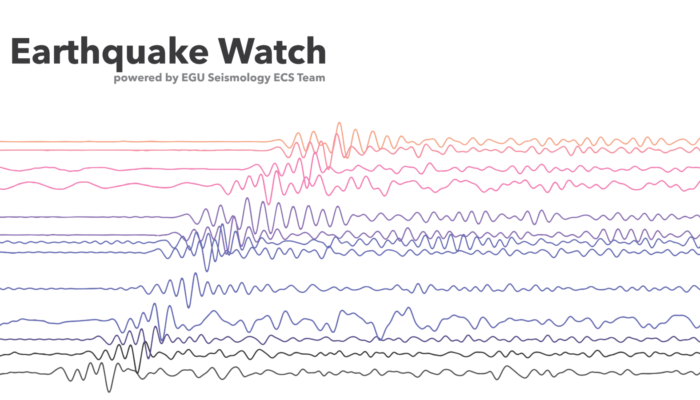
What we know
On December 29, a strong earthquake Mw 6.4 hit Petrinja at 12:20 CET, a town located in Central Croatia. This event is the largest onshore earthquake rupture in Central Europe since the M 6.5 Norcia earthquake occurred in 2016 (e.g. Scognamiglio, 20181) which killed 299 persons and 4,500 became homeless. Recent reports on the Petrinja quake suggest seven fatalities and heavy damages of the town. This event was felt in Italia, Bosnia and Serbia.
Furthermore, the event is the largest earthquake that hit Croatia since instrumental records began in 1908 (Markušić et al., 20202; ISC and USGS catalogue) and located on well-known active fault zones in this region (see: The European Database of Seismogenic Faults).

Figure 1: Location and felt reports received for the M 6.4 Petrinja earthquake. Credits: EMSC @LastQuake
Around 160,000 eyewitnesses reported the significant surface shaking on the application “I felt this earthquake” (Figure 1, EMSC). The maximum intensity recorded in the feel reports was estimated at VIII to IX (according to the EMS code) in the epicentral area, related to the great destruction, damage to buildings and fatalities.

Figure 2: Focal mechanism and source time function estimated by SCARDEC. Credits: Geoscope, Institute de Physique du Globe de Paris, @geoscope_ipgp
The earthquake hypocenter and focal mechanism suggest shallow depth and strike-slip faulting with a ~5 seconds rupture time (Figure 2). The mechanism suggested is in agreement with the compression stress along the N-S direction (HGI – Croatian Geological Survey; Métois et al., 20153). Besides, preliminary InSAR results show right-lateral faulting along the Pokupsko Fault in the NW-SE direction, an oriented rupture plane due to the surface deformation following the Petrinja earthquake (e.g. Figure 3).

Figure 3: InSAR results for the Petrinja earthquake. Sentinel-1 Co-seismic interferogram from (left) ascending track Dec 18 – Dec 30 and (right) descending track Dec 29 – Jan 4. Credits: Sotiris Valkaniotis @sotisvalkan
After the rupture, the seismic waves radiated from the near-source travel around the world and were recorded by seismic networks. Figure 4 show the “shaking across Europe” or ground motion visualization in Europe’s seismograph network.
Figure 4: Ground motion visualization of waves through Europe. Credits: Giuseppe Petricca @gmrpetricca, code by @IRIS_EPO
The Petrinja earthquake is involved in a seismic sequence which started one day before with an earthquake Mw 5.2 and another Mw 4.7 that happened nearby (USGS catalogue). A lack of seismicity following the Mw 4.7 foreshock could represent a seismic quiescence probably due to aseismic slip deformation before the Mw 6.4 Petrinja earthquake occurred. However, further models and analysis are needed to understand the preparatory phase of this earthquake. Figure 5 shows five days of the seismic evolution associated with the Petrinja earthquake, including around 1,600 detections found. The numerous aftershocks still decreasing in magnitude and frequency until today.

Figure 5: Temporal evolution of the seismic sequence associated to the Petrinja earthquake. Credits: Blaž Vičič @shakesomuch
Social impact
This event causes a broad impact due to the Petrinja town destroyed, the fear of potential aftershocks, the current pandemic situation and the winter weather condition in Central Europe represent a stressful and complex time for inhabitants. With the European Union and non-governmental agencies’ support, the government will help rebuild Petrinja and support its residents. We don’t know the final coast of this earthquake yet, but after this kind of event, it is important to learn what worked and what was not and rethink how we live with natural hazard. Similar to the recent Samos-Izmir earthquake in Turkey, the importance of education/preparation of people/authorities in geohazards and building codes is vital to reducing disaster risk. We all know that this kind of event can happen in the future, and we need to be better prepared to avoid paying this cost again.
December earthquakes
Valdivia earthquake (Chile) – 27th December – M 6.7
Nikolski earthquake (Alaska) – 1st December – M 6.4
Petrinja earthquake (Croatia) – 29th December – M 6.4
References
-
- 1 Scognamiglio, L., Tinti, E., Casarotti, E., Pucci, S., Villani, F., Cocco, M., … & Dreger, D. (2018). Complex fault geometry and rupture dynamics of the MW 6.5, 30 October 2016, Central Italy earthquake. Journal of Geophysical Research: Solid Earth, 123(4), 2943-2964.
- 2 Markušić, S., Stanko, D., Korbar, T., Belić, N., Penava, D., & Kordić, B. (2020). The Zagreb (Croatia) M5. 5 Earthquake on 22 March 2020. Geosciences, 10(7), 252.
- 3 Metois, M., D’Agostino, N., Avallone, A., Chamot‐Rooke, N., Rabaute, A., Duni, L., … & Georgiev, I. (2015). Insights on continental collisional processes from GPS data: Dynamics of the peri‐Adriatic belts. Journal of Geophysical Research: Solid Earth, 120(12), 8701-8719.
Note: This blog corresponds to a brief seismological review of the preliminary results about a mainshock event and seismic activity. An earthquake can be disastrous for the neighbouring towns and people. When our team pick an “Earthquake of the month” (now “Earthquake Watch”) it is important to keep in mind that we are not looking for the most mediatic and deadly one. We are generally looking for regions where we can learn more about the seismic hazard, seismotectonic background, and social impact, which we put together with preliminary contributions. Understanding the seismic hazard is one way to address disaster risk reduction and develop resilient cities. As EGU Seismology ECS Team, our thoughts are with the earthquake struck communities in this challenging time.
This blog post was written by ECS representative Javier Ojeda
with revisions from ECS representative Walid Ben Mansour and Maria Tsekhmistrenko
